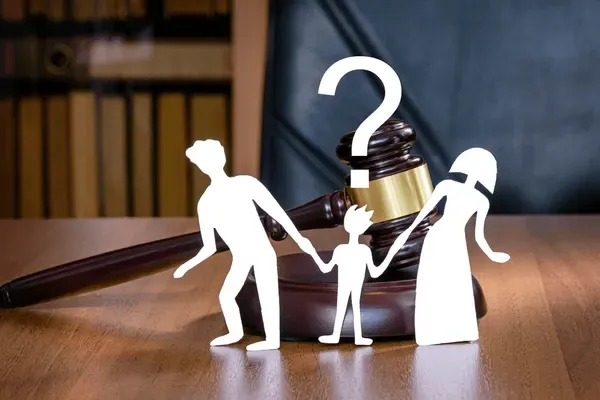Step-by-Step Guide to Voluntary Dismissal in North Carolina
Had a Change of Heart? Here’s How to Stop a Divorce
Updated 2024

In the realm of civil procedure, the concept of voluntary dismissal holds significant weight, particularly in the state of North Carolina (NC). Whether you're a plaintiff or defendant, comprehending the nuances of dismissal procedures can be critical. In this comprehensive guide, we delve into the intricacies within North Carolina's legal framework. From understanding the procedure to its implications, this article serves as a roadmap for navigating dismissal in NC courts.
What is Voluntary Dismissal?
It refers to the termination of a legal action by the plaintiff before a final judgment is reached. It's a strategic maneuver that allows the plaintiff to withdraw their case voluntarily. This process is governed by Rule 41 of the North Carolina Rules of Civil Procedure, providing a mechanism for plaintiffs to dismiss their claims without prejudice.
In North Carolina, voluntary dismissal can be initiated by the plaintiff at any time before the case is submitted to the jury for decision or before the court's ruling on the merits if the case is tried without a jury. This flexibility empowers plaintiffs to reassess their legal strategies or pursue alternative resolutions outside of litigation.
When Can a Case Be Voluntarily Dismissed?
The right to voluntary dismissal is a procedural safeguard afforded to plaintiffs. However, it's essential to understand the limitations and timing constraints associated with this privilege. In North Carolina, a plaintiff may dismiss their case voluntarily once without prejudice. Subsequent attempts are subject to the two-dismissal rule, which imposes restrictions on refiling the same claim.
When a civil matter is "dismissed without prejudice," it signifies a definitive conclusion, as the claim cannot be revived or refiled. This dismissal constitutes a final judgment, marking the ultimate resolution of the case, with no further recourse available except through an appeal to a higher court.
This provision underscores the importance of thoughtful consideration before pursuing voluntary dismissal. Plaintiffs must weigh the potential consequences and implications of their decision, particularly regarding the possibility of future litigation.
Dismissal With or Without Prejudice: What's the Difference?
One crucial distinction is whether the dismissal is made with or without prejudice. Rule 41 of the North Carolina Rules of Civil Procedure allows a judge to grant a motion to dismiss a case without prejudice.
By Statute, if the case is dismissed "without prejudice", the lawsuit can be filed again by the plaintiff, preserving their right to pursue the claim. On the other hand, a dismissal with prejudice operates as an adjudication upon the merits, effectively barring the plaintiff from bringing the same claim again.
Understanding the implications of dismissal with or without prejudice is paramount, as it can significantly impact the plaintiff's future legal options and the finality of the dismissal.
The Plaintiff May File Another Suit
In cases of dismissal without prejudice, the plaintiff may file another suit, either in the same court or a different jurisdiction, seeking to address the same legal issues. This option provides plaintiffs with the opportunity to reevaluate their legal strategies, gather additional evidence or pursue alternative avenues for resolving the dispute. However, it's essential to recognize that refiling a dismissed claim may entail additional costs, time, and resources.
The administrative closing of a case to permit arbitration
The administrative closing of a case to permit arbitration is a strategic maneuver employed by parties seeking alternative dispute resolution methods. In some legal jurisdictions, including North Carolina, parties may opt to temporarily suspend court proceedings through administrative closure while they pursue arbitration to resolve their disputes. This approach allows litigants to explore arbitration without forfeiting their right to continue the litigation if arbitration fails to yield a satisfactory outcome. By administratively closing the case, parties can effectively pause the litigation process, conserve resources, and engage in arbitration proceedings without the need to dismiss the case voluntarily.
Procedures for Filing a Notice of Voluntary Dismissal
North Carolina it requires compliance with specific procedural requirements outlined in Rule 41. This includes filing a written notice of dismissal with the court and serving it on all parties involved in the case. The notice must state whether the dismissal is with or without prejudice, providing clarity on the intended ramifications of the dismissal.
Additionally, the timing of the voluntary dismissal can influence its legal effects. Plaintiffs should be mindful of any pending motions or court dates to ensure that the dismissal is executed in accordance with procedural guidelines.
The Two-Dismissal Rule: Understanding its Significance
North Carolina's two-dismissal rule imposes limitations on the plaintiff's ability to voluntarily dismiss the same claim multiple times. Under this rule, if a plaintiff voluntarily dismisses an action twice, any subsequent dismissal operates as an adjudication upon the merits, barring the plaintiff from refiling the claim.
This rule aims to prevent abuse of this mechanism and promote judicial efficiency by discouraging repetitive litigation of the same claim.
Exceptions and Limitations to Voluntary Dismissal
While voluntary dismissal offers plaintiffs a valuable recourse, certain exceptions and limitations apply. For instance,it does not preclude the defendant from seeking recovery of costs or attorney fees incurred as a result of the litigation. Additionally, the court may impose conditions or restrictions on voluntary dismissal to protect the rights of the parties involved.
Understanding these nuances is essential for plaintiffs considering voluntary dismissal, as it can impact the overall outcome and implications of the case.
Notice of Dismissal or Stipulation: Its Legal Implications
The filing of a notice of dismissal or stipulation carries significant legal implications for the parties involved. Once a notice of dismissal is filed, the action is terminated, and the court's jurisdiction over the matter ceases. However, it's essential to ensure compliance with procedural requirements to avoid any challenges to the validity of the dismissal.
Additionally, parties may opt for a stipulated dismissal, where both parties agree to the terms of dismissal, providing certainty and clarity regarding the resolution of the case.
Voluntary Dismissal and Its Impact on Litigation
Voluntary dismissal can significantly impact the trajectory of litigation and the rights of the parties involved. Whether pursued as a strategic maneuver or as a means of resolving disputes outside of court, voluntary dismissal offers plaintiffs the flexibility to reassess their legal options and pursue alternative resolutions.
However, it's crucial to approach voluntary dismissal with careful consideration of its potential consequences and implications for future legal proceedings.
Challenges and Pitfalls in Voluntary Dismissal
Despite its advantages, voluntary dismissal is not without its challenges and pitfalls. Plaintiffs must navigate procedural requirements, timing constraints, and potential repercussions carefully. Failure to adhere to the prescribed guidelines or overlooking critical details could result in adverse outcomes or legal disputes.
Seeking guidance from legal professionals can help mitigate risks and ensure that voluntary dismissal is pursued effectively and strategically.
Resting a Case
Resting a case typically occurs when the plaintiff has presented all evidence and witnesses to support their claims, signaling the completion of their presentation to the court. This critical juncture prompts the defendant to prepare their defense and potentially present their own evidence and witnesses. Understanding when the plaintiff has officially rested their case is essential for both parties and the court to proceed with the next stages of the legal proceedings effectively. Clear communication and adherence to procedural guidelines are paramount to ensure that all parties are afforded due process and the opportunity to present their arguments fully.
Seeking Legal Counsel: The Importance of Professional Guidance
Given the complexities surrounding voluntary dismissal and dismissal procedures in North Carolina, seeking legal counsel is paramount. Experienced attorneys can provide invaluable guidance and representation, ensuring that your rights and interests are protected throughout the legal process.
Whether navigating voluntary dismissal, responding to legal challenges, or exploring alternative dispute resolution methods, legal professionals play a crucial role in achieving favorable outcomes and resolving legal disputes effectively.
Conclusion: Key Takeaways
- Voluntary dismissal in North Carolina allows plaintiffs to withdraw their claims before a final judgment is reached.
- Understanding the nuances of dismissal procedures, including the two-dismissal rule and distinctions between dismissal with or without prejudice, is essential.
- Compliance with procedural requirements and seeking legal counsel can help mitigate risks and ensure the effective pursuit of voluntary dismissal.
- Careful consideration of the implications and consequences of voluntary dismissal is crucial for informed decision-making and strategic litigation.
In essence, voluntary dismissal offers plaintiffs a valuable recourse for reassessing their legal options and pursuing alternative resolutions. However, navigating dismissal procedures requires diligence, adherence to procedural requirements, and, in many cases, professional guidance to achieve optimal outcomes.












